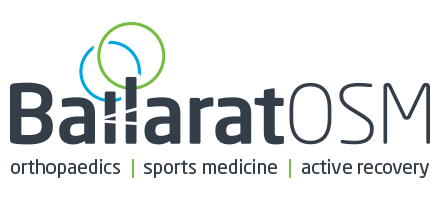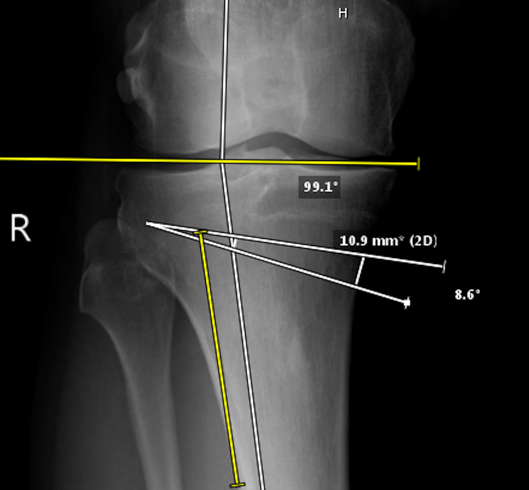Osteotomy is a crucial operation for early arthritis and pre-arthritic conditions of the knee.
For knees with a “bow” deformity – the deformity is usually in the tibia. We used medial opening wedge osteotomies from when they were first available – the Puddu plate was a stainless steel plate that could be inserted through a small incision around 2000. As soon as titanium locking plates became available – allowing patients to weight bear immediately after surgery and often off the crutches by 2 weeks, we changed to the Synthes Tomofix in 2009. Digital imaging was introduced in around 2004, digitised long leg radiographs where available the following year allowing more accurate planning of our osteotomies than ever.
Local infiltration analgesia was gradually introduced to realignment osteotomy again speeding up the recovery. Instead of using a calcium phosphate bone graft substitute, bone crunch has taken it’s place. Bone crunch is real bone, saved at the time of hip replacement surgery, but then frozen and processed.
Finally, a decent low profile plate has been introduced to the market. The Flexit titanium low profile plate can sit under the hamstrings tendons, and is less likely to need a secondary operation to remove the plate. Preservation of the medial ligament where laxity of the ligament is present seems easier to achieve. We’re not yet sure whether the slightly lower rigidity of the plate will reduce the rare instances of delayed union requiring a secondary bone grafting operation, but it is expected. Distal femoral osteotomies are typically used for “knock knees” in adults with early arthritis. A small medial closing wedge corrects the deformity and turns off the pain on the lateral side of the knee. In the early 2000’s we were doing lateral opening wedge osteotomies but the plate caused an irritation of the ITB on the outside of the knee. A “subvastus” approach to the medial side of the distal femur using the more rigid Tomofix plates were more rigid, and allowed earlier weight bearing. we’re hoping with the Flexit plate is more forgiving on the thigh muscle and maybe people will be off the crutches at two to four weeks.
Distal femoral osteotomies are typically used for “knock knees” in adults with early arthritis. A small medial closing wedge corrects the deformity and turns off the pain on the lateral side of the knee. In the early 2000’s we were doing lateral opening wedge osteotomies but the plate caused an irritation of the ITB on the outside of the knee. A “subvastus” approach to the medial side of the distal femur using the more rigid Tomofix plates were more rigid, and allowed earlier weight bearing. we’re hoping with the Flexit plate is more forgiving on the thigh muscle and maybe people will be off the crutches at two to four weeks.
We keep our eyes out for valuable future improvements – but so far computer navigation and robotics hasn’t added anything over what has been achievable with intra-operative fluoroscopy and experience.
Mr David Mitchell
Orthopaedic Surgeon


